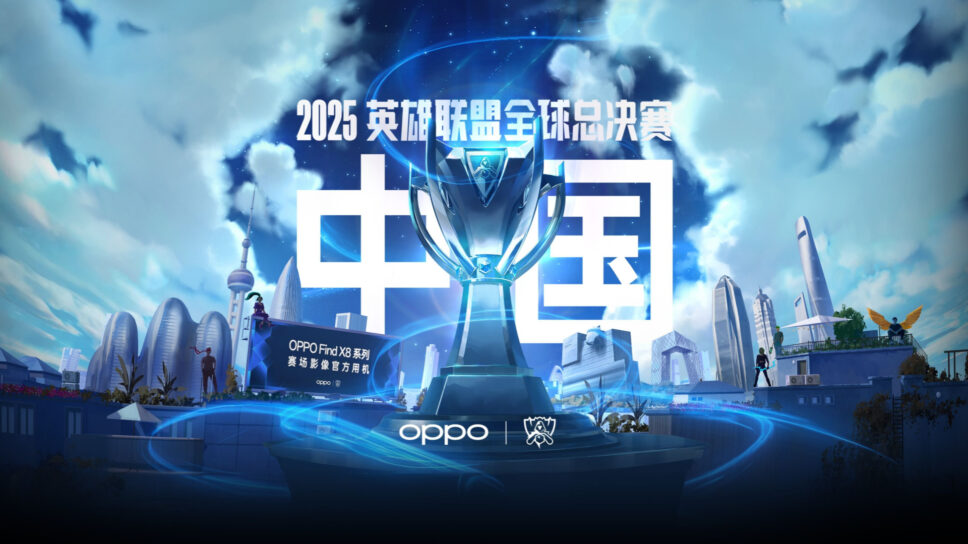The League of Legends World Championship will return to China for the Finals, this time being held in the lively cities of Shanghai and Chongqing. These places will again host the greatest teams across the globe that aspire to claim the Summoners Cup. After seeing their teams concede defeat for four consecutive years to the LPL, fans and analysts in Korea now wonder whether the LCK will break the streak. How will it be possible for Korea to claim the title for the seventh time since 2013? Blending rostered experience and youth with meta mastery, the LCK is always a Worlds contender, but in 2025 they will face an onslaught of Chinese giants, a rising LEC, and myriad potential upsets from all corners of the world. This week we will analyze the tournament structure and examine the strengths and weaknesses of LCK’s top representatives alongside the LPL’s continuity and innovation, then dissect emerging meta shifts that could determine the fate of Worlds 2025.
The Competition Layout, Tiers and Groups

Wars 2025 will begin with a unique group stage containing a record rhythm of twenty teams competing across four cities. The LCK has once again dispatched their best teams: T1 with Faker seeking a fifth Worlds title, Gen.G, with their structured macro play centered on sobering domestics, and riding the youthful wave of a revival, DAMWON KIA. Each placed in groups with lower seeded teams will scramble past stiffer challengers eager to prove themselves. As of late, the LCK has suffered early group game losses due to overconfidence and a blend of metas showcased in recent patches. The draw looks softer on paper this year, but every group is populated by LPL’s beaten finalists and competent LEC teams—the everpresent reminder that you’re never allowed to write off anyone.
Group stage wins will guarantee spots in the quarterfinals, avoiding the play-in and round of sixteen stages. Korean teams tend to be able to adapt between patches due to their scrim schedules and in-house coaching infrastructure. T1’s head coach, well known for his analytical deep-dives, has promised rigorous prep on every potential champion pool shift. Gen.G’s recent focus on side-lane pressure might give them some advantages in the best-of-one group format. The first week of play will depend on how fast each LCK team figures out the overarching meta and responds to LPL’s innovative drafts.
LCK’s Quest: Experience, Innovation and Adaptation
LCK teams have historically relied upon a structured foundation which includes disciplined wave management, coordinated jungle pathing, and late-game teamfight execution. Over the last two Worlds, dominant high-variance picks and micro star Shanghai chinese plays deviating the spotlight have taken center stage. LCK has to figure out the balance of their great trademark macro along with their traditional approach to msi praise aggressiven skirmish metas to reclaim the title. T1’s Faker, the ever-loyal forefront of this blend, punisher over-extension’s with his midlane commanding Azair, supports this reasoning due to his repeated deployment. The former’s willingness to experiment returning to comfort zones at risk this season with his pocket Orianna and Jayce supports this reasoning.
Gen.G’s ongoing rivalry against the best LPL teams, highlighted during the MSI semifinals, is strong proof that they are resilient through early hardships. Featuring a challenger jungler who has one of the highest jungle control percentages in LCK history, he dominates in meeting the LPL’s infamous invading strategies head on. Alongside two explosive carry-style ADCs, DAMWON KIA possesses raw mechanical skill and a rookie support who climbed from solo queue on off-meta enchanters. If they manage to meld solo-queue ingenuity with macro discipline, the solo-queue creatives may become Korea’s reminder of the expectations set for mid-to-late game brilliance.
LPL’s Continuity Merged with Creative Ingenuity
The LPL has innovated League of Legends esports more than anyone else. This is demonstrated through their 4 World Championship titles. EDward Gaming, JD Gaming, and Royal Never Give Up are all veteran contenders for the title. Each of them has extensive experience in the playoffs and well-renowned coaching which is willing to go beyond meta-basedstrategies. The domestic league of the LPL invited extensive diversity in champion pools during the international competition, showcasing unconventional and off-meta strategies.
EDG’s star midlaner would be the one leading LPL’s hope for the fifth consecutive Worlds with his spearheading Galio ults at crucial moments of the game. The group stage match against Faker is also a rematch of the 2021 knockout and not only has strategical value but also carries significance regarding the Korea-China rivalry. Simultaneously JDG’s bottom lane duo capped off the spring with the highest combined kill share in the history of the LPL which indicates that power lanes could once again change the direction of the international narrative. The depth of the LPL indicates that their third seeded teams could upset any favored LCK team which means that every series becomes a contest of preparedness and adaptability: a true master’s tournament.
Shifts in the Meta and Significant Update Changes
Worlds 2025 starts with patch 14.15 for the opening because of the mid-sustaining power spikes and weakening some jungle champions such as Lillia and Kha’Zix. These changes should benefit early skirmishes as well as aggressive objective control, a stark contradiction from the slow-burn team macro strategies that have worked in prior years for LCK teams. Roaming champions are more likely to be prioritized which include LeBlanc, Taliyah, and Twisted Fate which puts pressure on Korean mid laners when dealing with losing wave pressure since they have to contest for map control.
The top lane and support items have also been changed to reduce tank durability and buff enchanter supports. Korean coaches now appear more focused figuring out synergy with support champions who can carry and pair more with the jungle, likely sidelining mids who roam. The mid-group patch (14.17) is critical and will probably introduce more changes. The team that adapts to these changes first will take a huge advantage. Can LCK transform their calibrated discipline into quick adaptive responses as the tournament progresses? That’s the main narrative throughout the competition.
Expectations and Guidelines before the Summoner’s Cup

With T1 as the main contender during the group stage and expected to remain clear of early meta traps with these adapting plans alongside Faker, set for roster late game call, followed the cup and deep runs. Regardless of history, at least one LCK team grabs the attention of all during the semi finals. While Gen.G sits strong mid-game with their veterans and balance strung to deal on slight edges versus their quarterfinals, super close offshore series. Still, the most predictable drafts might suffer under DAMWON KIA’s explosive style their less structured execution most likely pays off and it’s the unpredictability LCK’s plans have been yearning for in the previous worlds.
In the end, the team that conquers the World Championship will need to blend their Korea-inspired strategic macro with the aggressive skirmish micro-plays that mark LPL dominance. The question is whether the LCK can refocus and take down a dynasty. With their champions being equally traditional and daringly off-meta, we might be about to see the dawn of a new Korean era in China, with the Summoner’s Cup set to return home for the eighth time.





